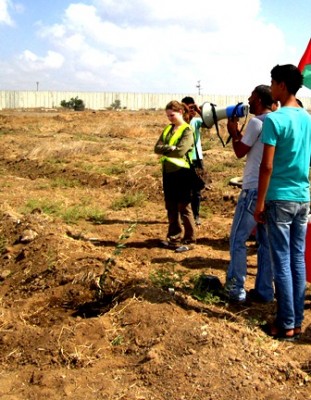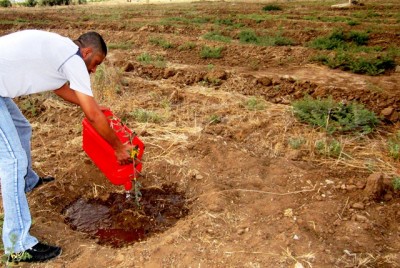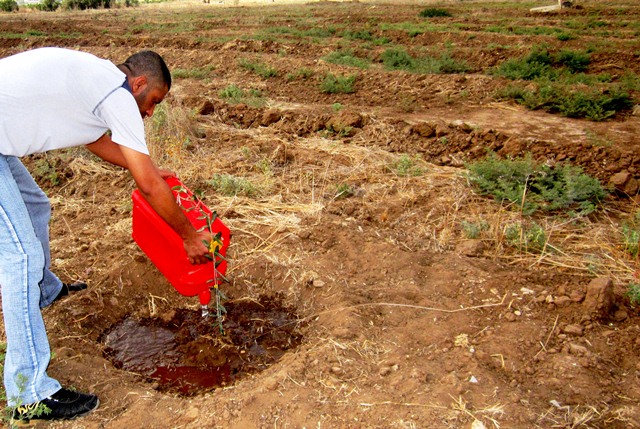12 October 2011 | International Solidarity Movement, Gaza
The zone of death, what Israel calls the buffer zone, to the north of Beit Hanoun isn’t shrinking but is a little less dead. For the last three years, the only life that has managed to survive here was a few scraggly plants that somehow manage to survive the IOF’s regular bulldozing of the land. These plants have been joined every Tuesday by a devoted group of activists from the Local Initiative of Beit Hanoun and the International Solidarity Movement. Israel had managed to wipe out all traces of what used to be here, houses, sprawling orchards, fields of vegetables, and grazing sheep. For two weeks the Beit Hanoun Local Initiative decided to leave behind something more than Palestinian flags when they went into the buffer zone. They left behind a grove of olive trees.

We reached the edge of the dead zone, passed out giant green jugs of water, and started forward to tend to our trees. It isn’t an easy walk, carrying a heavy jug of water over ground that has bulldozed too many times to count. It is made easier though with the knowledge that we are going to only grove of olive trees that exists in the buffer zone, the twenty olive trees that we have planted over the previous two weeks. The olive tree has always been an important symbol in Palestine, it is not just the universal symbol of peace, but it is also a symbol of the tie to the land that the people here feel. This is their land, they will not abandon it. The ethnic cleansing of the Nakba and Naqsa will not be repeated. We pour the water on trees. Every tree gets some water. Sadly, one of the trees appears to be dying. We give it extra water.

We will continue the struggle until Palestinian olive orchards can grow on all the land of Palestine.

